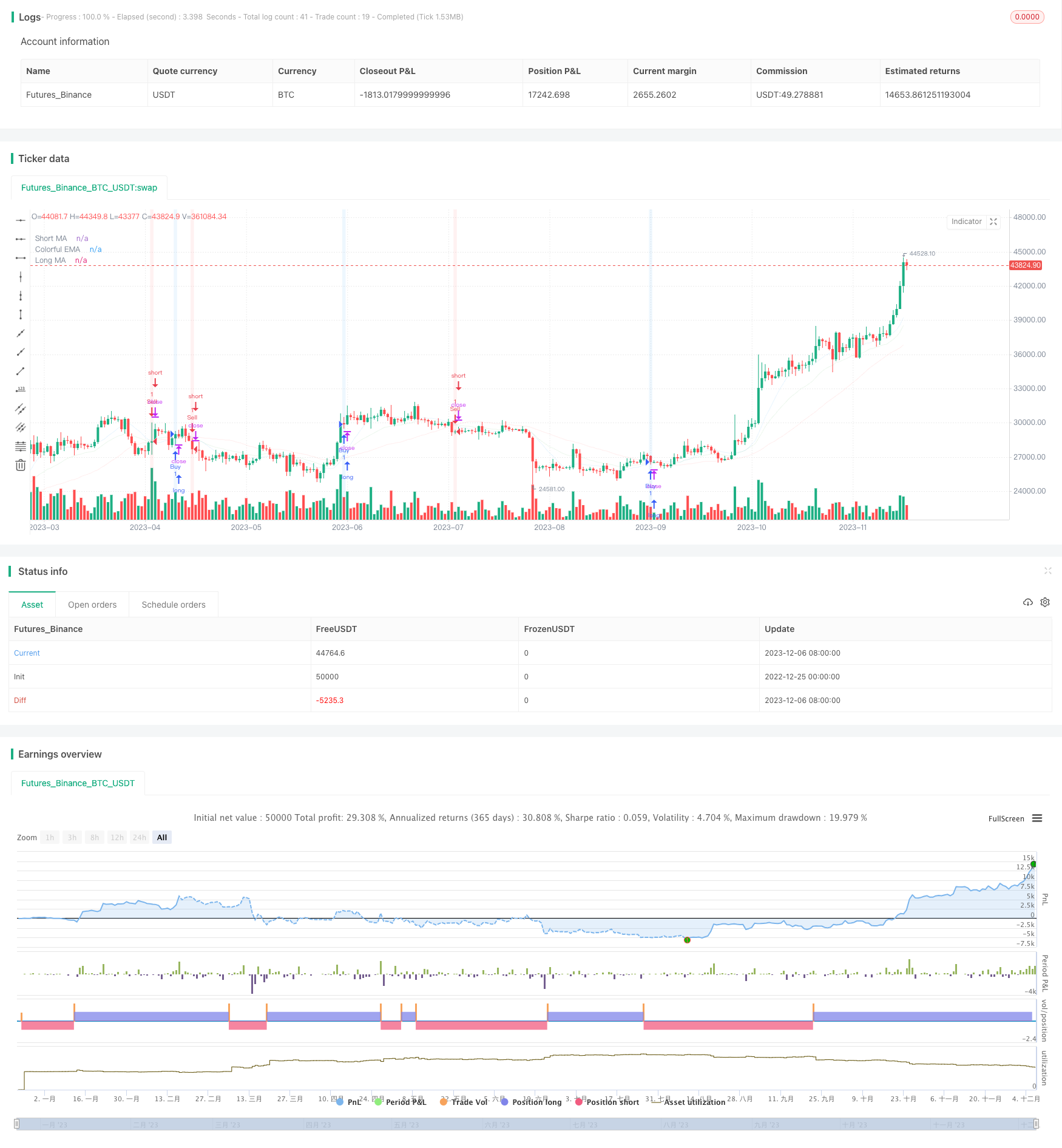
概述
移动平均线交叉策略是一种基于移动平均线的timing策略。它通过计算不同周期的移动平均线,判断其交叉情况,产生买入和卖出信号。该策略同时结合了指数移动平均线作为辅助判断指标,进一步提高信号的准确性。
原理
该策略的核心逻辑基于两个移动平均线的交叉情况。具体来说,分别计算n日简单移动平均线(short MA)和m日简单移动平均线(long MA)。当short MA从下向上突破long MA时,产生买入信号;当short MA从上向下跌砪long MA时,产生卖出信号。这反映了短期趋势对长期趋势的洗涤和修正。
此外,该策略还引入了x日指数移动平均线(EMA)作为辅助指标。EMA相比SMA更为流畅,能更快速地体现价格变化趋势。它的辅助作用在于,只有当短期EMA也确认了移动平均线交叉信号时,才会触发实际的交易信号。这避免了部分虚假信号的干扰,提高了交易策略的稳定性。
优势
移动平均线交叉策略具有以下优势:
简单易用。该策略仅仅依赖两个移动平均线的交叉情况,非常简单,容易理解和实施。
直观形象。移动平均线能清晰地反映市场趋势,其交叉情况也十分直观,无需复杂计算。
历史悠久。移动平均线策略可以追溯到上世纪初,经历了百年的市场考验,已成为技术分析的经典工具之一。
风险可控。通过调整移动平均线的天数参数,可以控制交易信号的频繁程度,进而控制风险。
通用灵活。移动平均线交叉策略适用于多种品种和多种时间周期,是一种非常通用和灵活的交易策略。
风险
该策略也存在一些风险:
仓位切换频繁。当市场震荡起伏时,移动平均线可能频繁交叉,导致换仓过于頻繁。
产生延迟。移动平均线本身承载一定滞后性,特别是长周期均线,可能错过短期交易机会。
需调参优化。不同品种和时间周期下,移动平均线参数需要独立测试和优化,否则效果可能不佳。
可配合其他指标。单一的移动平均线策略效果并非最佳,往往需要辅助其他技术指标过滤信号。
优化方向
该策略可从以下几个方面进行优化:
调整移动平均线参数,适应不同周期。可以测试不同的短期长期均线参数组合,找到最佳参数。
增加成交量的辅助判断。例如设置成交量突破指标,避免无效信号。
增加波动率指标的判断。例如KDJ,MACD等判断市场实际走势,过滤不确定信号。
结合企业基本面。根据业绩预期等调整参数,使策略更具前瞻性。
策略组合化运用。与其他策略或模型组合使用,发挥协同效应。
总结
移动平均线交叉策略通过简单的均线交叉原理实现交易信号的生成。它直观易懂,参数调节灵活,风险可控,是一种实用性很强的timing策略。但其本身也存在一定的滞后性与频繁切换风险。因此,该策略可以通过多种方式进行优化与组合,从而发挥更大效用。它已成为量化交易中一种简单有效的基础策略。
/*backtest
start: 2022-12-25 00:00:00
end: 2023-12-07 05:20:00
period: 1d
basePeriod: 1h
exchanges: [{"eid":"Futures_Binance","currency":"BTC_USDT"}]
*/
//@version=5
strategy("MA Crossover Strategy", overlay=true)
// Define input parameters
shortLength = input(10, title="Short MA Length")
longLength = input(40, title="Long MA Length")
emaLength = input(20, title="EMA Length")
// Calculate moving averages
shortMA = ta.sma(close, shortLength)
longMA = ta.sma(close, longLength)
colorfulEMA = ta.ema(close, emaLength)
// Create buy and sell conditions
buyCondition = ta.crossover(shortMA, longMA)
sellCondition = ta.crossunder(shortMA, longMA)
// Execute buy and sell orders
if (buyCondition)
strategy.entry("Buy", strategy.long)
strategy.close("Sell")
if (sellCondition)
strategy.entry("Sell", strategy.short)
strategy.close("Buy")
// Color the background based on buy and sell conditions
bgcolor(buyCondition ? color.new(color.blue, 90) : na)
bgcolor(sellCondition ? color.new(color.red, 90) : na)
// Plot moving averages
plot(shortMA, color=color.new(color.blue, 90), title="Short MA")
plot(longMA, color=color.new(color.red, 90), title="Long MA")
// Plot colorful EMA with transparency
plot(colorfulEMA, color=color.new(color.green, 90), title="Colorful EMA")